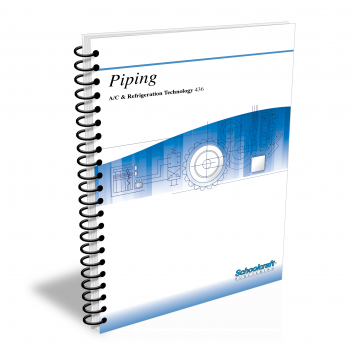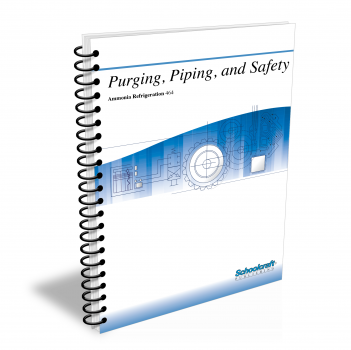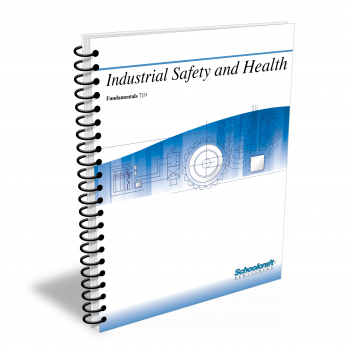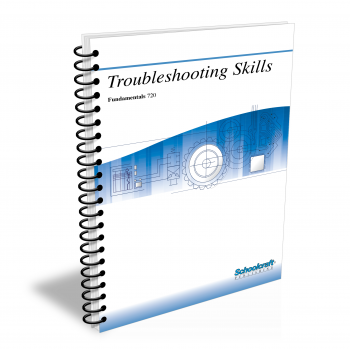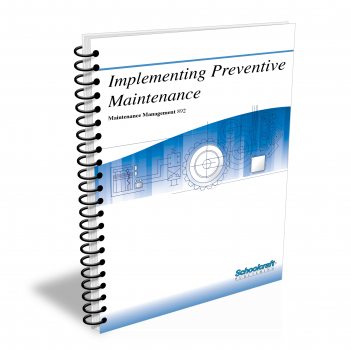Plumbing Systems Maintenance
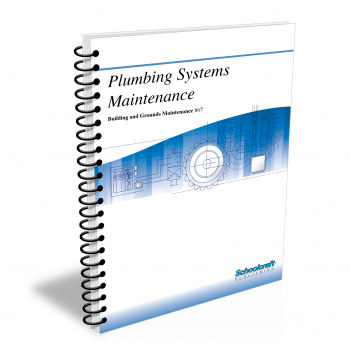
Course Number: 867
The Plumbing Systems Maintenance textbook covers maintaining plumbing systems in a factory, plant, or other industrial or commercial site. It describes the structure and function of on-site plumbing systems (water supply, sanitary waste, and storm water), and explains how the major fixtures in these systems work. Finally, the textbook tells how to take care of common plumbing problems.
Does your curriculum require additional topics not included in this textbook? Build a customized version of the Plumbing Systems Maintenance textbook below.
Recommended Contact Hours – 20
Preview a Chapter
Available Supporting Material
- Table of Contents
- Exam Copies
- Suggested Titles
Table of Contents
Chapter 1: Introduction to Plumbing
Topics: Codes and standards; Stacks; Traps; Connection methods; Sewer system; Venting system; Plumbing fixtures; Water supply and distribution
Learning Objectives:
- Describe a basic plumbing system.
- Name the parts of a DWV system and explain their functions.
- Explain the purpose of the different elements in an industrial cold water supply and distribution system.
- Describe a basic system for industrial hot water supply and distribution.
- Describe three basic systems for boosting in coming water pressure.
Chapter 2: Plumbing Fixtures
Topics: Water closets; Leaks and stoppages; Urinals; Lavatories; Trim and faucets; Sinks; Showers; Drinking fountains
Learning Objectives:
- Describe six lavatory categories and compare the different flushing systems used in water closets and urinals.
- Explain the operation of different types of faucets.
- Give examples of industrial showers, sinks, and drinking fountains.
Chapter 3: Sanitary Drainage Systems
Topics: Materials used; Fittings and joints; Piping; Subdrains; Floor drains; Leaks; Stoppages; Indirect wastes; Cleanouts
Learning Objectives:
- State the function of sanitary drainage systems and describe the materials, fittings, and joints used in them.
- Discuss the installation and connection of the piping components of a sanitary drainage system.
- Explain the purpose of floor drains and cleanouts, and where they are needed.
- Tell how to repair leaks and clear stoppages in sanitary piping.
Chapter 4: Vent Systems
Topics: Pipe materials, fittings, and joints; Piping; Fixture trap vents; Types of vents; Vent terminals
Learning Objectives:
- List the components of a vent system and explain their functions.
- Discuss the materials used for vent pipes, fittings, and joints.
- Explain the importance of air pressure and water flow in DWV systems.
- Discuss the requirements for the installation of piping in a vent system.
- Describe several types of vent system and their applications.
Chapter 5: Storm Water Drainage
Topics: Materials; Fittings and joints; Piping; Subdrain system; Site drainage system; Roof drains; Expansion and contraction; Subsoil drainage
Learning Objectives:
- Explain the function and installation of the elements in storm water and site drainage systems.
- Name the materials, fittings, and joints used in storm water and site drainage systems.
- Describe how the piping components of storm water and site drainage systems should be installed.
- Compare six different roof drains and give details of their installation.
Chapter 6: Potable Water Distribution
Topics: Materials, fittings, and joints; Pressure and velocity; Hydraulic shock; Limiting flow and pressure; Pressure-boosting systems; Contamination
Learning Objectives:
- Tell how the separate components of a potable water distribution system work together in its operation.
- List the materials suitable for use in a potable water system, the fittings used with them, and the factors to be considered in selecting them.
- Discuss the effects of water pressure and flow in a potable system.
- Give installation details for piping and valves in a potable eater system.
- Explain how a potable water system can be contaminated and how contamination can be prevented.
Chapter 7: Hot Water Distribution
Topics: Materials, fittings, and joints; Water heaters; Safety requirements; Circulation; Temperature; Expansion and contraction
Learning Objectives:
- Explain the selection of materials and the installation of components for a hot water system.
- Describe the operation and application of different water heaters.
- Explain the safety requirements for hot water tanks and heaters.
- Describe a hot water circulation system, tell when it must be installed, and explain the advantages of strip heaters.
- Tell how water temperature affects the equipment and layout of a hot water distribution system.
Chapter 8: Valves
Topics: Gate, globe, check, quarter-turn, plug, ball, and butterfly valves; Materials; Applications
Learning Objectives:
- Compare the function and applications of plumbing system valves.
- Tell how the main types of valves end connections.
- Compare the different types of valve end connections.
- Name the factors to be considered in the selection of materials for valves.
Chapter 9: Piping Assembly Procedures
Topics: Cast iron soil piping; Brass, steel piping; Wrenches; Copper tubing; Plastic piping
Learning Objectives:
- List three joints used in iron piping and tell how to make them.
- Explain how to assemble screwed and flanged joints in brass and steel piping.
- Give example of the proper use of different pipe wrenches and vises.
- Tell how to assemble copper tubing with soldered, compression, and flared joints.
- Review the procedures for making joints in PVC and CPVC piping.
Chapter 10: Maintaining Plumbing Systems
Topics: Maintaining fixtures, water heaters, and waste systems; Opening clogged drains; Maintaining valves; Insulation; Leak repair
Learning Objectives:
- Name the chief points involved in the care and correct use of hand tools.
- Describe how to open the clogs and repair leaks in plumbing fixtures.
- Compare maintenance procedures for different types of valves.
- Tell how to clear stoppages and repair leaks in the drainage system.
- Explain the maintenance of water heaters, pumps, and pipe installation.
Request Exam Copies
Exam Copies
Ready to see a copy of our textbooks? After selecting which textbooks you’d like to review for your course, you can submit your request by either logging in or creating an account so we know where to ship your exam copies. A representative from Schoolcraft will contact you to confirm and finish processing your request.
Exam copies are always free and yours to keep.
Selected Exam Copies
none selected
* Maximum of five copies can be ordered
